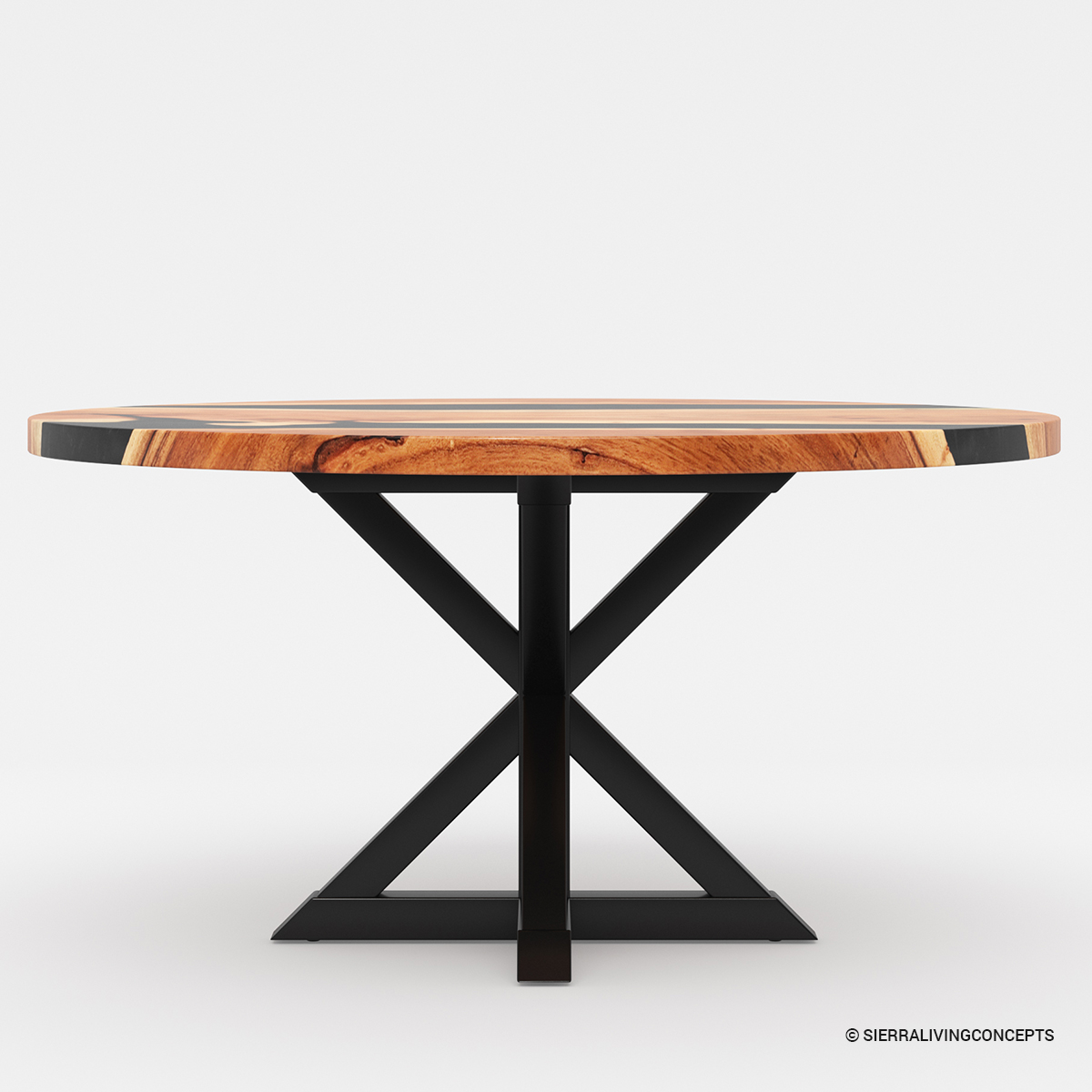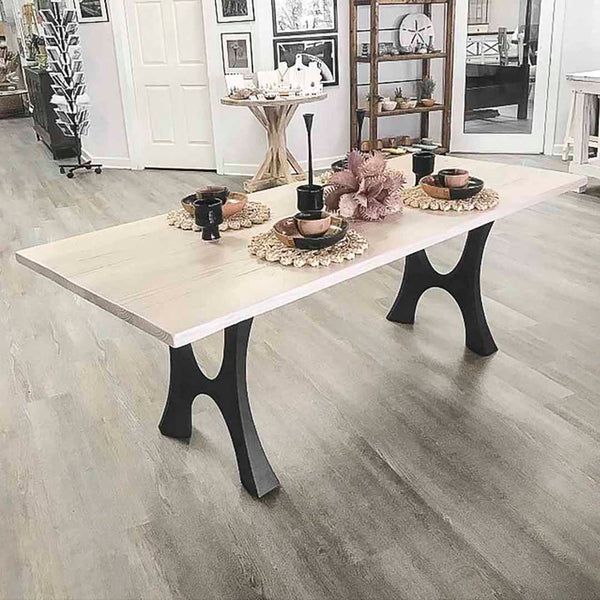Upgrade Your Furniture with Custom Dining Room Table Legs
Specialist Tips for Installing Dining-room Table Legs for Maximum Stability
When it concerns mounting dining-room table legs, achieving optimum stability is extremely important for both performance and aesthetic appeals. The process begins with picking the ideal products and hardware, complied with by thorough placement and consideration of weight distribution. Each step plays an important duty in ensuring that the completed item holds up against daily usage without jeopardizing safety and security or design stability. Nonetheless, understanding the nuances of these elements can substantially influence the general result. What specific techniques can improve security also additionally?
Select the Right Legs
When choosing the proper legs for your dining-room table, it is essential to think about both performance and visual appeals. The legs you pick will substantially impact the overall style and stability of the table. Evaluate the table's planned usage; if you expect constant gatherings, sturdier legs, such as those made from strong timber or steel, might be more appropriate, as they supply boosted toughness and support.
Conventional eating tables typically vary from 28 to 30 inches in elevation, so make sure the legs straighten with this requirement for convenience. Conical legs can add a modern touch, while turned legs could communicate an extra traditional visual.

Select Appropriate Equipment
Just how can the ideal equipment boost the stability and long life of your dining room table? The selection of suitable equipment is crucial to guaranteeing that the legs of your table are safely attached and able to hold up against routine usage. Top quality screws, bolts, and brackets supply the needed toughness to support the weight of the table, in addition to any added loads put upon it during meals or events.
When choosing screws, go with those made from long lasting materials such as stainless-steel or brass, which withstand deterioration and maintain honesty in time. The size of the screws is just as essential; they must penetrate deeply into the table's framework without jeopardizing stability. For bolted links, consider making use of lock washing machines to stop loosening up due to resonance or motion.
In addition, using corner braces can include extra assistance, particularly for larger tables or those with much heavier tops. These braces disperse weight evenly and aid preserve the table's form. Guaranteeing that the hardware you choose is appropriate for the details materials of your table will further enhance its general stability and long life, permitting you to appreciate your eating experience for several years to come.
Ensure Proper Positioning
Correct placement of dining-room table legs is vital for both aesthetic charm and practical stability. Misaligned legs can result in an unequal table top, which might not just be visually unappealing however likewise compromise the table's functionality. To attain ideal placement, begin by gauging the range from the table's corners to the leg attachment points. This ensures that each leg is located equidistant from the edges, creating a balanced look.
Use a degree throughout installation to validate that each leg is vertical to the table top. This step is important, as also small disparities can rise right into significant stability issues in time. It is suggested to mark the preferred leg placements on the bottom of the table with a pencil or masking tape before protecting them. This practice serves as a visual overview, allowing for adjustments as needed.
Moreover, confirm the positioning after the initial screws are tightened up, as adjustments may be necessary before totally securing the click here for more equipment. By prioritizing proper placement, you not just enhance the table's total layout but additionally ensure that it remains steady and useful for several years to find.

Think About Weight Distribution
After making certain appropriate placement of the dining area table legs, it is very important to consider weight circulation to improve security and performance. dining room table legs. Proper weight circulation is critical in protecting against wobbling and ensuring that the table can support its desired load without danger of tipping or collapsing
When placing the legs, guarantee they are put at equal distances from the facility of the table to uniformly distribute the weight across the structure. Think about the weight of the table top and any type of things that will frequently hinge on it, such as tabletop home appliances or attractive items. Tables with much heavier surfaces must ideally have legs located closer to the edges, as this maximizes the base of assistance and lessens the danger of instability.
Additionally, if the table is planned for use in a high-traffic area, take into consideration using larger materials for the legs or adding supporting aspects, such as cross-bracing or a lower rack - dining room table legs. These changes can assist keep balance and stop moving during use. Inevitably, a well-considered weight circulation technique will dramatically enhance the table's total efficiency, ensuring it stays a appealing and functional focal point for your eating room
Examination Stability Prior To Use
Testing the security of the eating area table prior to usage is a critical action that ought to not be ignored. Making sure that the table is safe and secure can prevent mishaps and lengthen the life expectancy of the furniture. Begin by using gentle stress to various points on the table surface. Lower on the facility and then along the sides, moving or observing any type of wobbling. If the table reveals instability, determine the legs or joints that may require adjustment.
Next, inspect that all screws and fasteners are tightened up correctly. Loose links can result in instability and prospective damages gradually. If required, make use of wood adhesive on joints to improve security, ensuring to allow sufficient drying out time.

Verdict
Finally, the installation of Clicking Here eating room table legs calls for cautious factor to consider of products, hardware, weight, and alignment distribution to achieve optimum security. By choosing high-grade fasteners and strong legs, ensuring exact placement, and dispersing weight evenly, the structural stability of the table can be considerably enhanced. Carrying out a stability test before regular use further guarantees that the table will certainly hold up against day-to-day stress, thus offering a dependable and safe eating experience.
When it comes to setting up eating space table legs, achieving maximum security is extremely important for both functionality and looks. The legs you pick will considerably affect the total layout and stability of the table (dining room table legs). Standard eating tables normally vary from 28 to 30 inches in height, so make certain the legs align web with this standard for comfort.Proper alignment of eating room table legs is essential for both visual appeal and useful stability.In final thought, the setup of eating room table legs requires careful consideration of products, hardware, alignment, and weight distribution to accomplish maximum stability